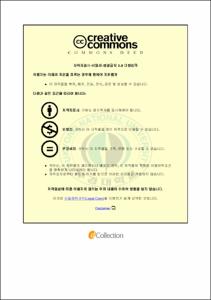생태계 기반 위험도 분석방법의 개선연구
- Abstract
- This study identified problems of the existing ecosystem-based fisheries assessment approach (Zhang et al., 2009), and suggested new methods for risk scoring and for the estimation of fishery risk index. First, the previous method for risk scoring has the range of risk score from zero to two for each indicator, which was replaced by the new method which has the rage of the scores from zero to three. A new method for calculating risk scores was developed in this study. Second, a new method for estimating the fishery risk index (FRI) was also developed in this study by considering the level of indicators, that is, species level and fishery level, which was not considered in the previous method. The new method developed in this study was applied to the funnel net fishery and trap fishery in the Jeonnam marine ranching ecosystem. More precise and detailed risk scores were obtained from the new method, which can explain risks by the wider range of risks for explaining 'better than target' and 'beyond limit' status. Then new method for estimating FRI could avoid the basic problem related with the duplicated computation of the fishery level indicator which calculates the FRI to be more accurate.
In the application of the new methods to the Jeonnam marine ranching ecosystem, two fisheries, funnel fishery and trap fishery, were selected as target fisheries. Black seabream, Acanthopagru schlegelii, rock bream, Sebastes inermis, gray mullet, Mugil cephalus, were selected as target species for the funnel fishery, and conger eel, Conger myriaster, was target species for the trap fishery. For assessing indicators of four management objectives, that is the maintenance of maintenance of sustainability, biodiversity, habitat quality and socio-economic benefits, indicators were selected considering the availability of data, which were 5 indicators for sustainability, 3 indicators for biodiversity, 4 indicators for habitat, 2 indicators for socio-economic benefit. The fishery risk index (FRI) of the funnel net fishery and the trap fishery were estimated to be 1.143 for tier 1 and 1.883 for tier 2 analysis and 1.400 for tier 1 and 1.836 for tier 2 analysis, respectively. The ecosystem risk index (ERI) of Jeonnam marine ranching ecosystem was estimated to be 1.184 for tier 1 and 1.875 for tier 2 analysis.
To apply the Integrated Fisheries Risk Analysis Method for Ecosystem (IFRAME) of Zhang et al. (2012) with an aim to assess and forecast impacts of fishing activities on fish and fisheries of an ecosystem, risk scores and risk indices were simulated based on a scenario by varying fishing intensity (F). The fishing intensities were varied from zero to two-times of the current fishing mortality level, such as F=0, 0.25F, 0.5F, 0.75F, F, 1.25F, 1.5F, 1.75F, 2F. In this study we compared the results of the simulation on the risk indices estimated from the tier 1 and tier 2 analyses. In this analysis, risk scores for most indicators for objectives of sustainability, biodiversity and habitat quality increased as the fishing intensity increased. But those of socio-economic benefits showed a different pattern in the trend of the simulation, where risk scores of socio-economic benefits declined at some level of the fishing intensities and then started increasing with the increase of the fishing intensity.
- Issued Date
- 2013
- Awarded Date
- 2013. 2
- Type
- Dissertation
- Publisher
- 부경대학교
- Alternative Author(s)
- Heewon Park
- Affiliation
- 부경대학교 대학원
- Department
- 대학원 수산물리학과
- Advisor
- 장창익
- Table Of Contents
- 목 차
Table of contents ⅰ
List of figures ⅴ
List of tables ⅸ
Abstract ⅻ
Ⅰ. 서론 1
Ⅱ. 정량적 분석의 위험도 분석방법 개선 5
1 서론 5
2 자료 및 방법 7
2.1 기존 연구에 의한 생태계 기반 위험도 분석법 7
2.2 방법 13
2.2.1 새로운 생태계 기반 지표 및 기준점 13
2.2.2 새로운 위험도 추정방법 14
2.2.3 새로운 어업위험지수 추정 18
2.2.4 위험지수 분산추정 21
2.3 자료 22
2.3.1 대상생태계, 대상어업, 대상종의 설정 22
2.3.2 생태계 기반 관리 목표, 목표별 지표 및 기준점 22
3. 결과 25
3.1 정량적 분석 (tier 1) 결과 25
3.1.1 지표별 위험도 평가 25
3.1.2 목표위험지수 (ORI) 및 종위험지수 (SRI) 34
3.1.3 어업위험지수 (FRI) 및 생태계위험지수 (ERI) 36
3.1.4 위험지수의 분산 추정 36
3.2 정성적 분석 (tier 2) 결과 39
3.2.1 지표별 위험도 평가 39
3.2.2 목표위험지수 (ORI) 및 종위험지수 (SRI) 45
3.2.3 어업위험지수 (FRI) 및 생태계위험지수 (ERI) 47
3.2.4 위험지수의 분산 추정 47
3.3 기존 연구에 의한 방법과 개선된 방법에 의한 위험도 구간 비교 50
3.3.1 위험구간 비교 50
3.3.2 목표위험지수 위험구간 비교 57
3.4 정량적 분석과 정성적 분석의 비교 61
3.4.1 지표별 위험도 비교 61
3.4.2 위험지수 비교 61
4. 고찰 66
Ⅲ. 어획강도에 따른 생태계 위험지수 변동 70
1. 서론 70
2. 자료 및 방법 72
2.1 자료 72
2.2 정량적 분석 (tier 1)에 의한 시뮬레이션 72
2.2.1 지속성 유지 75
2.2.2 생물다양성 유지 75
2.2.3 서식처 보호 77
2.2.4 사회경제적 편익 78
2.2 정성적 분석 (tier 2)에 의한 시뮬레이션 78
3. 결과 81
3.1 정량적 분석 (tier 1)에 의한 시뮬레이션 81
3.1.1 지속성 유지 81
3.1.2 생물다양성 유지 81
3.1.3 서식처 보호 84
3.1.4 사회경제적 편익 84
3.1.5 목표위험지수 및 종위험지수 89
3.2 정성적 분석 (tier 2)에 의한 시뮬레이션 89
3.2.1 지속성 유지 93
3.2.2 생물다양성 유지 96
3.2.3 서식처 보호 99
3.2.4 사회경제적 편익 99
3.2.5 목표위험지수 및 종위험지수 102
3.3 정량적 분석과 정성적 분석에 의한 시뮬레이션 결과 비교 106
3.3.1 지속성 유지 106
3.3.2 생물다양성 유지 108
3.3.3 서식처 보호 110
3.3.4 사회경제적 편익 110
4. 고찰 113
Ⅳ. 종합고찰 115
Ⅴ. 요약 117
Ⅵ. 참고문헌 118
Appendix 123
감사의 글 140
- Degree
- Doctor
- Files in This Item:
-
-
Download
 생태계 기반 위험도 분석방법의 개선연구.pdf
기타 데이터 / 2.36 MB / Adobe PDF
생태계 기반 위험도 분석방법의 개선연구.pdf
기타 데이터 / 2.36 MB / Adobe PDF
-
Items in Repository are protected by copyright, with all rights reserved, unless otherwise indicated.